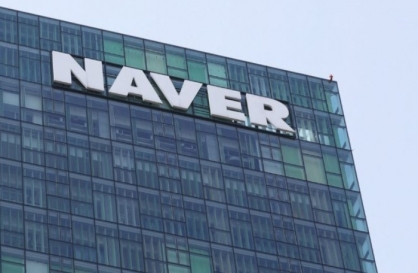Sales of consumer electronics from smartphones to digital cameras will exceed $1 trillion for the first time this year, driving tin consumption higher just as stockpiles of the metal slump to a 33-month low.
Demand will outpace supply for a third consecutive year, with the 9,400-metric-ton shortage seen by ITRI Ltd., a St. Albans, England-based industry group, enough to make about 9 billion mobile phones. London Metal Exchange inventories fell 52 percent since August to the lowest since April 2009. Prices may rise as much as 23 percent to $26,000 a ton in 2012, the median of 17 analyst and trader estimates compiled by Bloomberg show.
The anticipated surge may make tin, used as solder, this year’s best-performing industrial metal, after being the biggest loser of 2011. Commodities tumbled into a bear market in September on concern that slowing growth would cut consumer spending. Sales of consumer electronics will rise 5 percent to $1.04 trillion in 2012, according to GfK Digital World and the Arlington, Virginia-based Consumer Electronics Association, which represents about 2,000 companies.
Demand will outpace supply for a third consecutive year, with the 9,400-metric-ton shortage seen by ITRI Ltd., a St. Albans, England-based industry group, enough to make about 9 billion mobile phones. London Metal Exchange inventories fell 52 percent since August to the lowest since April 2009. Prices may rise as much as 23 percent to $26,000 a ton in 2012, the median of 17 analyst and trader estimates compiled by Bloomberg show.
The anticipated surge may make tin, used as solder, this year’s best-performing industrial metal, after being the biggest loser of 2011. Commodities tumbled into a bear market in September on concern that slowing growth would cut consumer spending. Sales of consumer electronics will rise 5 percent to $1.04 trillion in 2012, according to GfK Digital World and the Arlington, Virginia-based Consumer Electronics Association, which represents about 2,000 companies.

“Tin is fundamentally one of the most attractive commodities,” said Christoph Eibl, who helps manage $2.5 billion of assets at Tiberius Asset Management AG in Zug, Switzerland. “Because it will be in deficit in 2012, you will basically see low stock levels. It must be a clear buy.”
The metal for delivery in three months, the LME’s benchmark contract, advanced 9.9 percent to $21,100 this year, its best start to a year since 2006. The Standard & Poor’s GSCI Total Return Index of 24 commodities rose 0.8 percent as the MSCI All- Country World Index of equities added 2 percent. Treasuries returned 0.2 percent, a Bank of America Corp. index shows.
Production will expand 0.6 percent to 355,000 tons in 2012, the smallest gain in three years, as consumption reaches 364,400 tons, ITRI estimates. Rising output in Brazil and Malaysia will compensate for declines China and Indonesia, the biggest suppliers, according to the industry group.
This year’s projected demand values the tin market at $9.5 billion, based on the average price in 2011. Electronics account for more than 50 percent of consumption, according to ITRI, whose members produce about two in every three tons. (Bloomberg)
PT Timah, Indonesia’s biggest producer, will report net income of 1.24 trillion rupiah ($135.7 million) this year, 4.8 percent more than in 2011 and the most in four years, according to the mean of 13 analyst estimates compiled by Bloomberg. Shares of the Pangkalpinang, Bangka Belitung-based company fell 35 percent to 1,710 rupiah in the past year in Jakarta trading and will rebound 27 percent to 2,167.5 rupiah in the next 12 months, the average of 10 predictions shows.
Chinese Exports
Demand may fall short of forecasts. Europe used 6.5 percent less last year as the region’s debt crisis extended into the biggest economies, ITRI estimates. While Europe accounts for about 16 percent of the consumption, a recession would weaken demand for imported consumer electronics. Chinese exports rose 13.4 percent in December from a year earlier, the weakest pace since February, customs data show.
Sales of electronic goods fell 10 percent in 2009 amid the worst global recession since World War II, the Consumer Electronics Association estimates. The euro region will contract 0.2 percent this year after growing 1.6 percent in 2011, according to the median of 21 economist estimates compiled by Bloomberg. The expansion in China, which uses about two in every five tons, will slow to 8.5 percent from 9.2 percent, the median of 20 forecasts shows.
‘Blindingly Obvious’
“If a broad based sell-off or crash were to unfold across the markets, say on the back of an escalation in the credit crunch, then in the short term it does not matter a bit what the fundamentals are,” said William Adams, a London-based analyst at Basemetals.com, a data and information provider. “Market psychology would override the fundamentals until the market becomes so oversold that it’s a blindingly obvious buy.”
There are no signs of slower demand yet, with consumer confidence in the U.S. reaching its highest level since July in the week ended Jan. 8, according to the Bloomberg Consumer Comfort Index. China imported 4,343 tons of tin in November, the most since April 2009, customs data show.
A flat-screen television or computer may contain as much as 4.8 grams of tin and a mobile phone 1 gram, according to Henkel AG, a producer of solder for electronics. Phone sales should grow 7.1 percent to almost 1.91 billion units this year, Gartner Inc., a Stamford, Connecticut-based research company, estimates. Personal computer shipments may climb 5.4 percent, according to International Data Corp., based in San Mateo, California.
Light Commercial
About 15 grams of the metal is used in an average vehicle, according to Dusseldorf, Germany-based Henkel. Sales of cars and light commercial vehicles will rise 5 percent to 79.1 million units in 2012, according to LMC Automotive Ltd., a research company in Oxford, England.
Tin is more than 31 times rarer than copper in the earth’s crust, according to the U.S. Geological Survey. PT Timah gets an average of 200 grams of metal from every cubic meter of soil, about 63 percent less than two decades ago.
“It’s still a market in deficit,” said Nicholas Snowdon, an analyst at Barclays Capital in New York. “Assuming we see a soft landing in the Chinese economy, we think demand will remain relatively robust.” (Bloomberg)
-
Articles by Korea Herald




![[Graphic News] Number of coffee franchises in S. Korea rises 13%](http://res.heraldm.com/phpwas/restmb_idxmake.php?idx=644&simg=/content/image/2024/05/02/20240502050817_0.gif&u=)



![[Robert J. Fouser] AI changes rationale for learning languages](http://res.heraldm.com/phpwas/restmb_idxmake.php?idx=644&simg=/content/image/2024/05/02/20240502050811_0.jpg&u=)









![[Eye Interview] 'If you live to 100, you might as well be happy,' says 88-year-old bestselling essayist](http://res.heraldm.com/phpwas/restmb_idxmake.php?idx=652&simg=/content/image/2024/05/03/20240503050674_0.jpg&u=)
